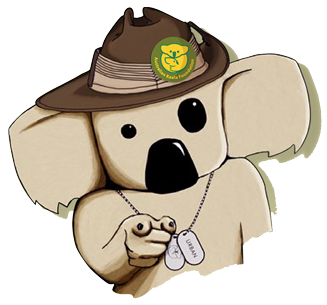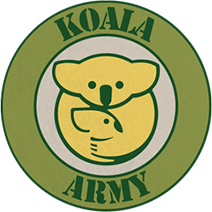Students: you can read our FAQ section here, or use our search function up the top to search for specific info!

– Koalas are not bears. They are not placental or ‘eutherian’ mammals, but MARSUPIALS, which means that their young are born immature & they develop further in the safety of a pouch. It’s incorrect to call them ‘Koala bears’ – their correct name is simply ‘Koalas’. Did you know you can adopt your own cute Koala through the AKF? Click here to find out more.
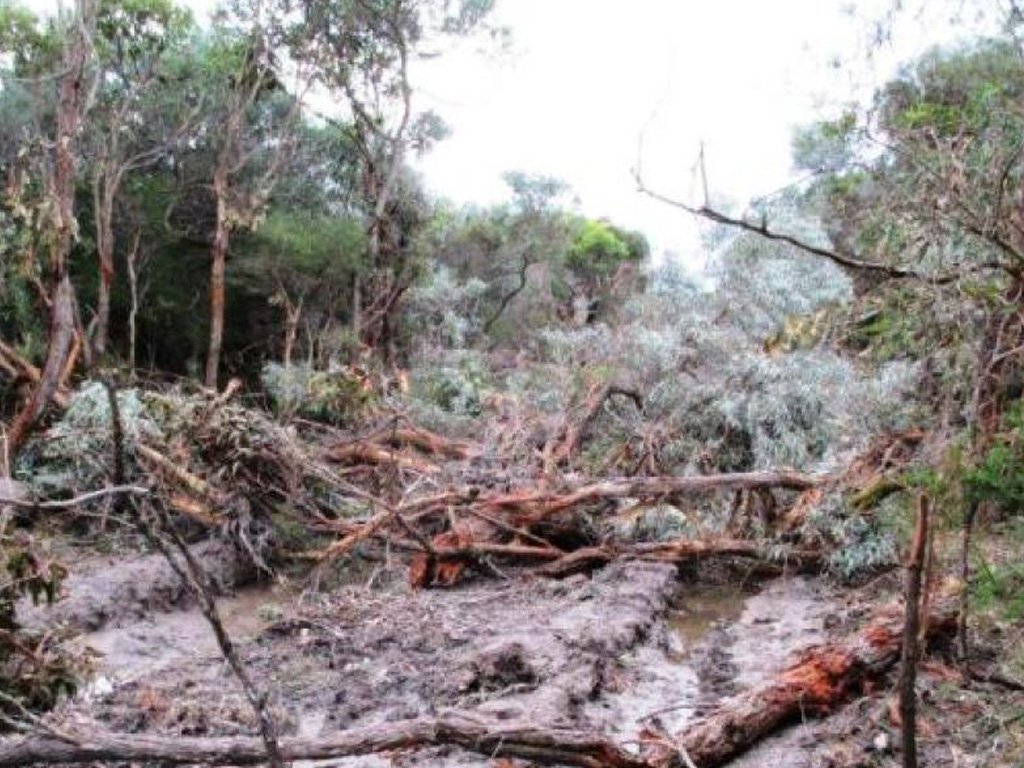
– Habitat loss is the greatest threat to Koalas. The main reasons for this are land clearing, bushfires and diseases of the eucalypts, like ‘dieback’ which cause the trees to die. The AKF wants a Koala Protection Act, which means that Koala trees can’t be touched. Donate today to help us achieve this for Koalas.
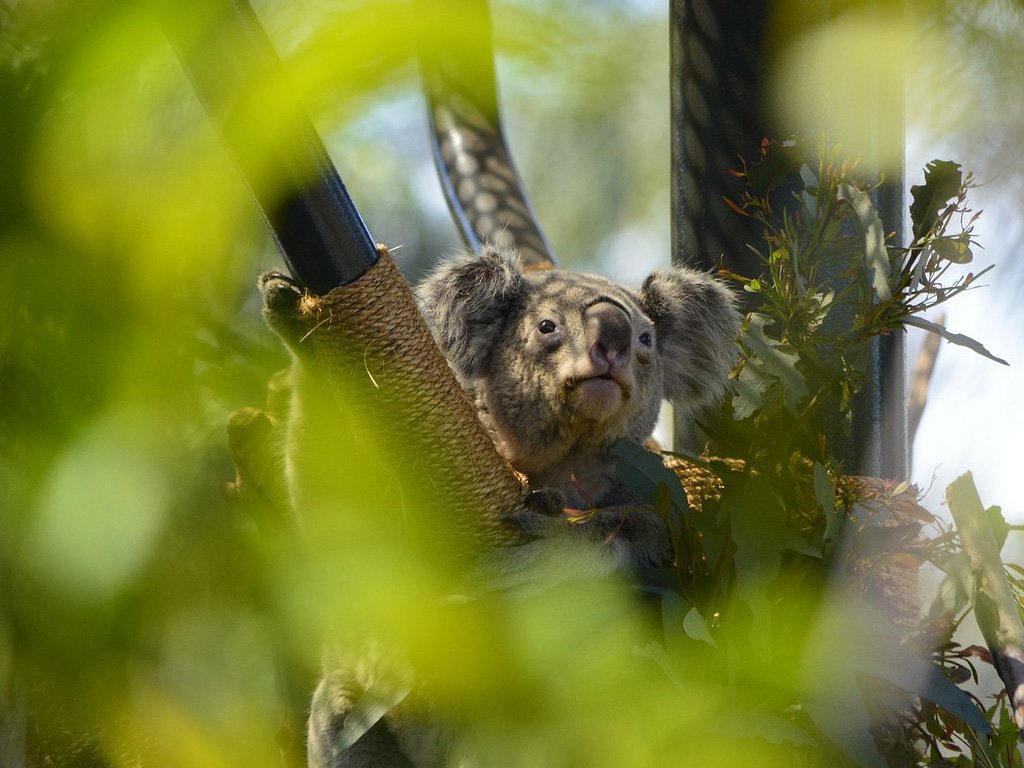
– The AKF estimates that there are likely to be less than 60,000 Koalas remaining in Australia today and it could be as low as 33,000. Much of their habitat has already been lost. This makes it vitally important to save what is left.
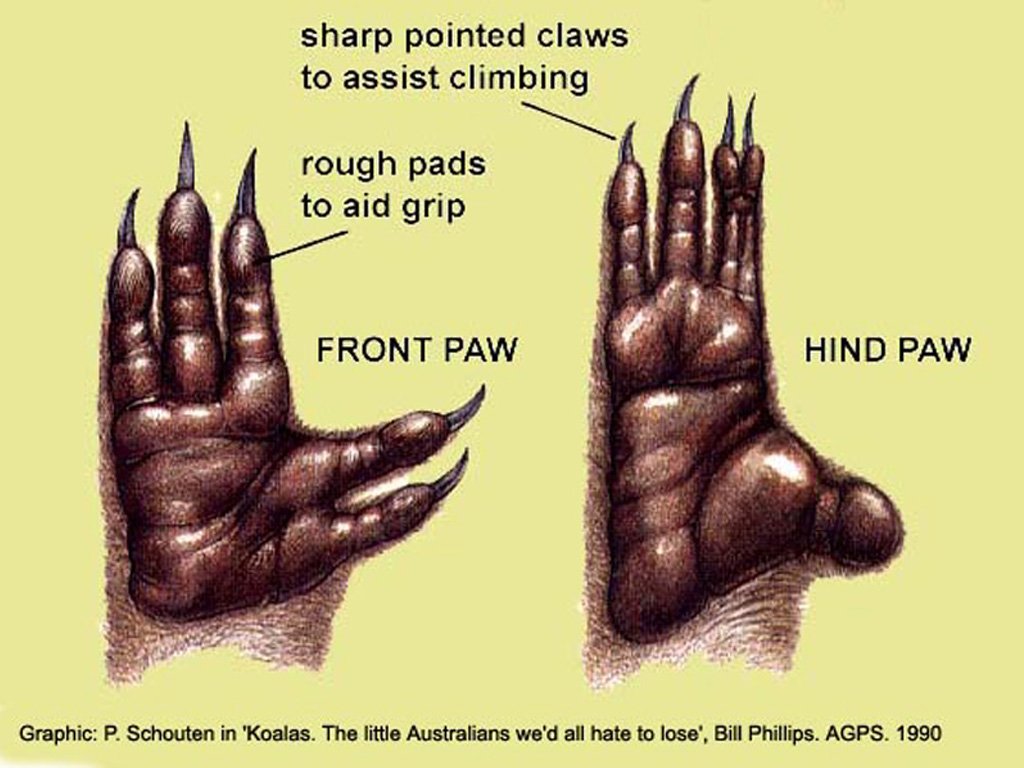
– Koalas have 5 digits on each front paw, two of which are opposed to the others, much like our thumbs are able to be moved differently from the fingers. This helps them to hold firmly onto the branches and to grip their food. The 2nd and 3rd digits on their hind paws are fused together to form a grooming claw.

– Koalas are mostly nocturnal. Nocturnal animals are awake at night and asleep during the day. Koalas, however, sleep for part of the night and also sometimes move about in the daytime. They often sleep for up to 18-20 hours each day.
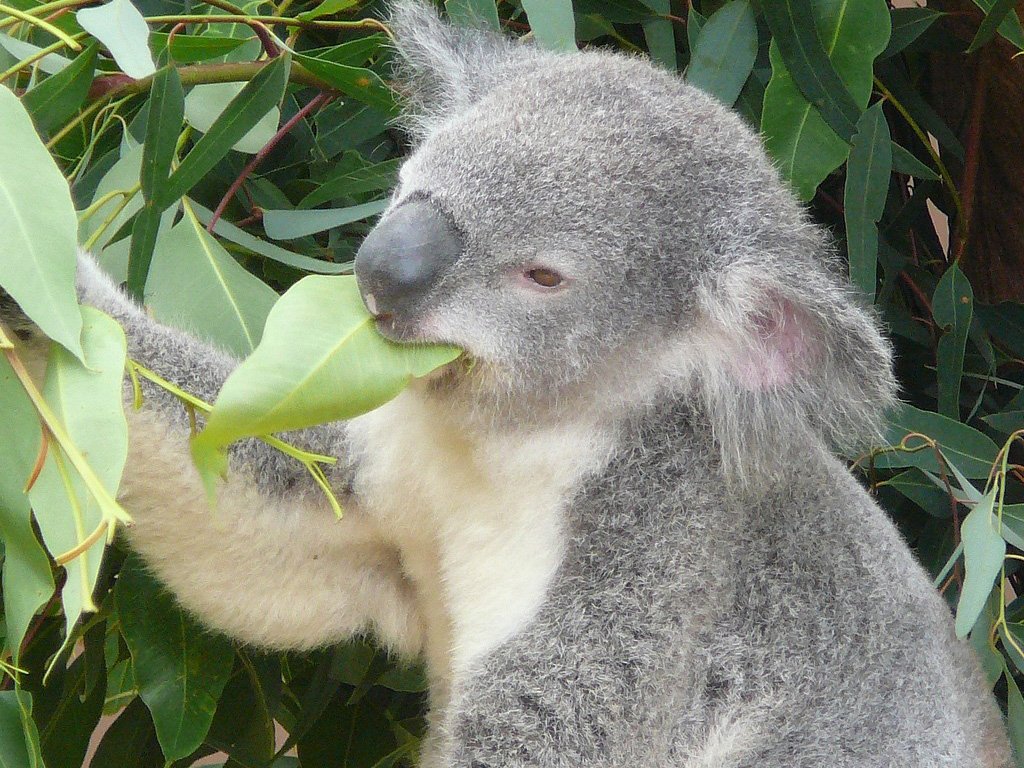
– An adult koala eats about 1/2 – 1 kilogram of leaves each night.
– There is a myth that Koalas sleep a lot because they ‘get drunk’ on gumleaves. Fortunately, this is not correct! Most of their time is spent sleeping because it requires a lot of energy to digest their toxic, fibrous, low-nutrition diet and sleeping is the best way to conserve energy

– Koalas in the southern parts of Australia (left) are considerably larger and have thicker fur than those in the north (right).This is thought to be an adaptation to keep them warm in the colder southern winters.

– Each Koala’s ‘home’ is made up of several trees called HOME TREES. They visit these same trees regularly. The area covered by these trees is called the Koala’s HOME RANGE. Each Koala has its own home range, which overlaps those of other Koalas. Unless breeding, they don’t normally visit another Koalas home trees. The size of each home range depends upon a range of factors including the quality of the habitat and the sex, age and social position in the population of the Koala.

– A mature male has a dark scent gland in the centre of his white chest which exudes a dark, sticky substance. He rubs this on his trees to indicate to other Koalas that this is his territory
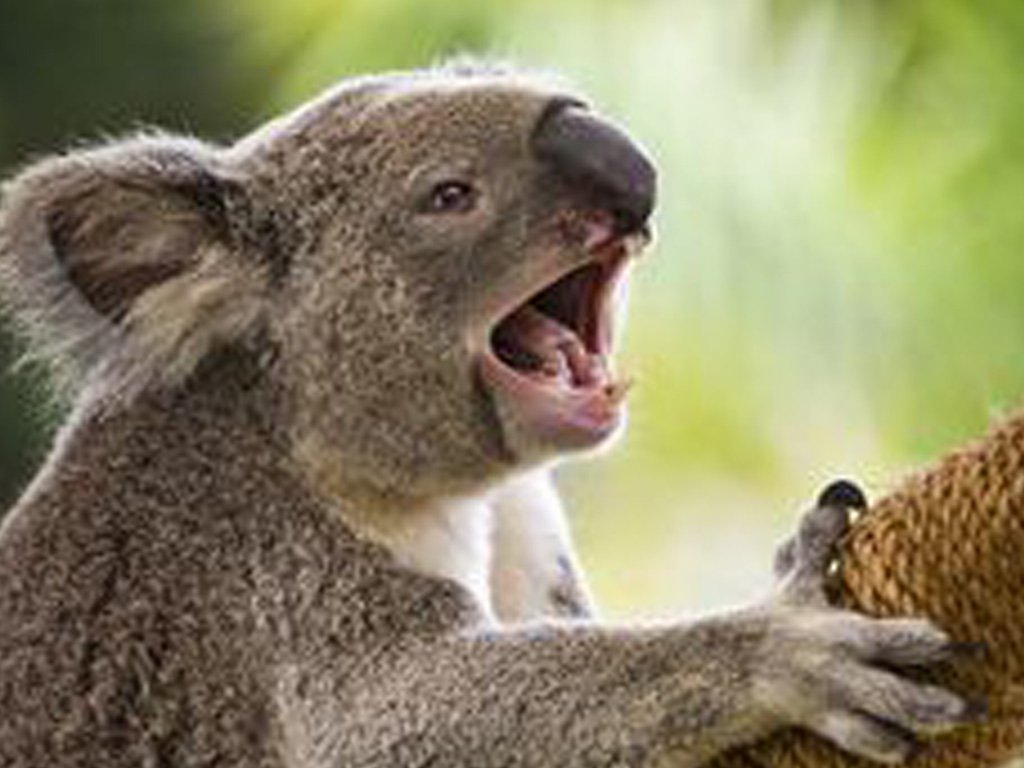
Koalas also communicate with each other by making a range of noises. The most startling and unexpected of these in such a seemingly gentle animal is a sound like a loud snore and then a belch, known as a ‘bellow’
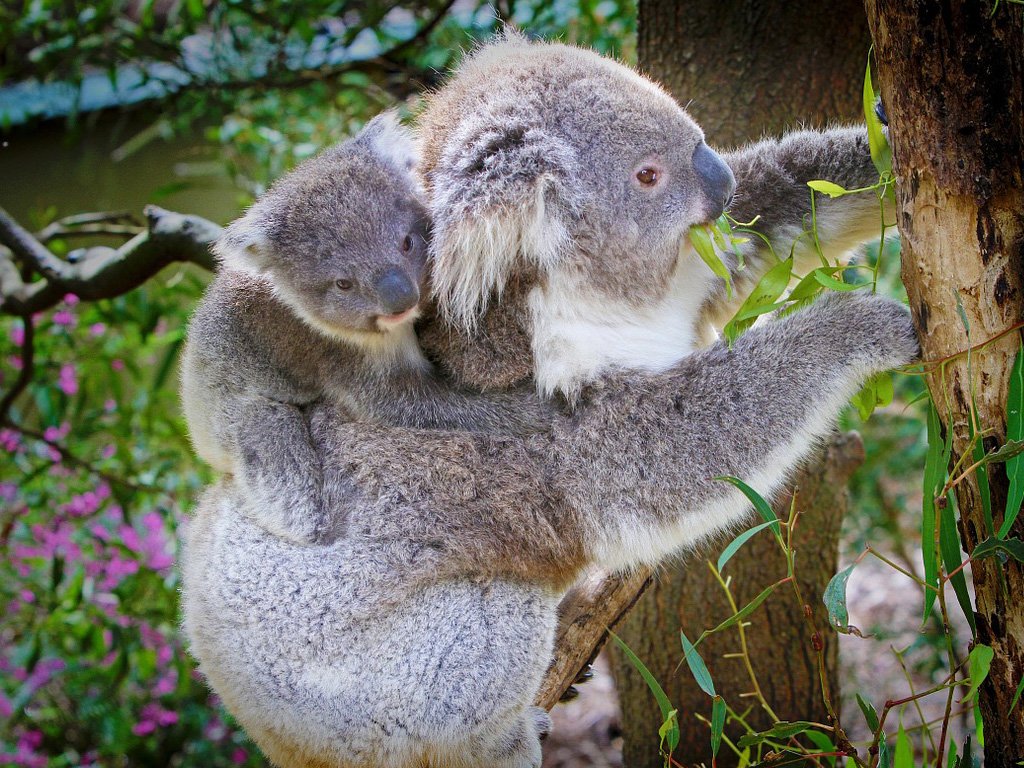
– Baby Koalas are known as ‘Joeys’. Scientists often refer to them using terms like ‘juveniles’, ‘pouch young’ and ‘back young’.
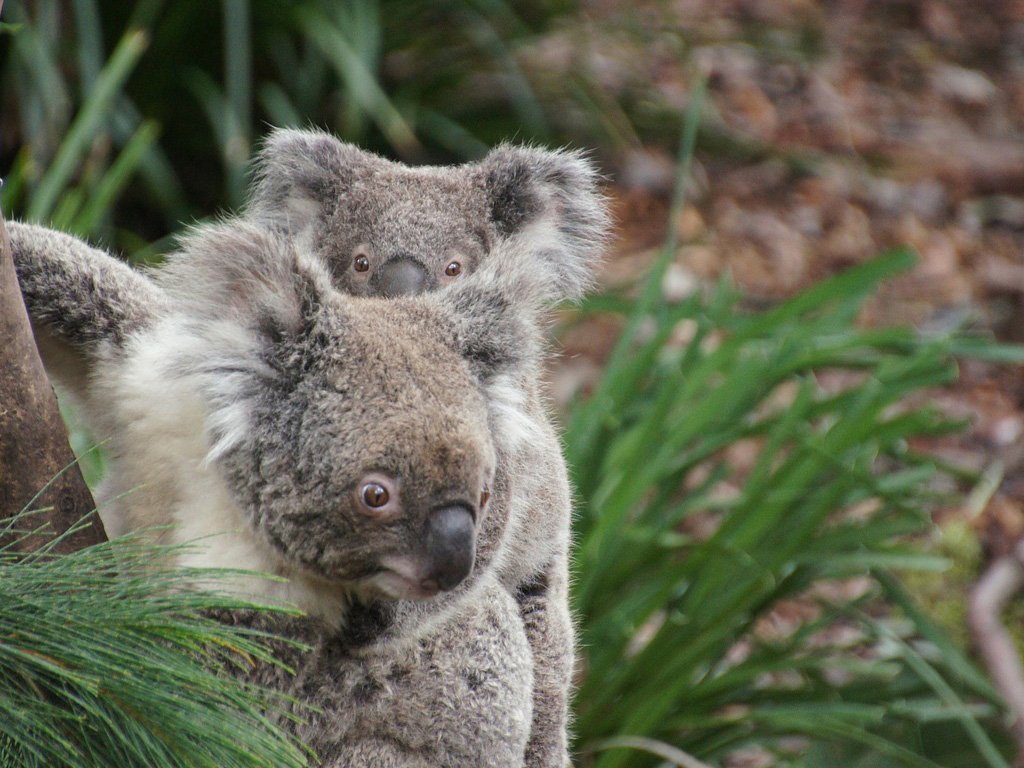
– Younger breeding females usually give birth to one Joey each year, depending on a range of factors. However, not all females in a wild population will breed each year. Some, especially older females, will produce offspring only every two or three years.–
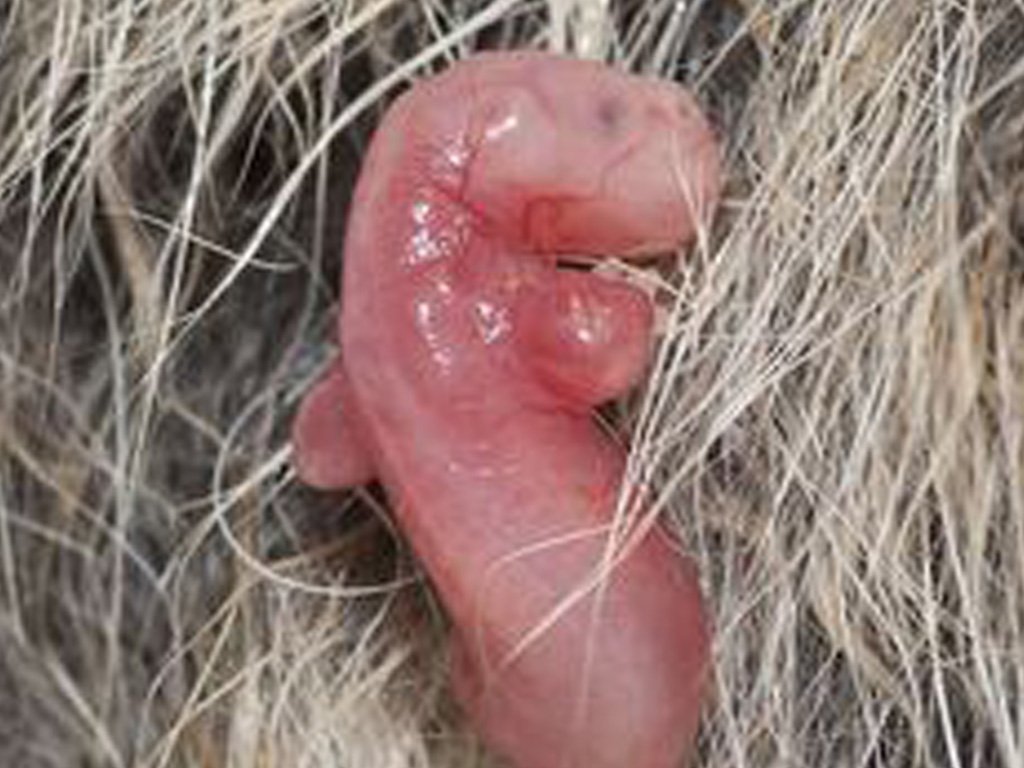
– When the Joey is born, it’s only about 2 centimetres long, is blind and furless and its ears are not yet developed. On its amazing journey to the pouch, it relies on its well-developed senses of smell and touch, its strong forelimbs and claws, and an inborn sense of direction. Once in the pouch, it attaches itself to one of the two teats which swells in its mouth, preventing it from being dislodged from its source of food.
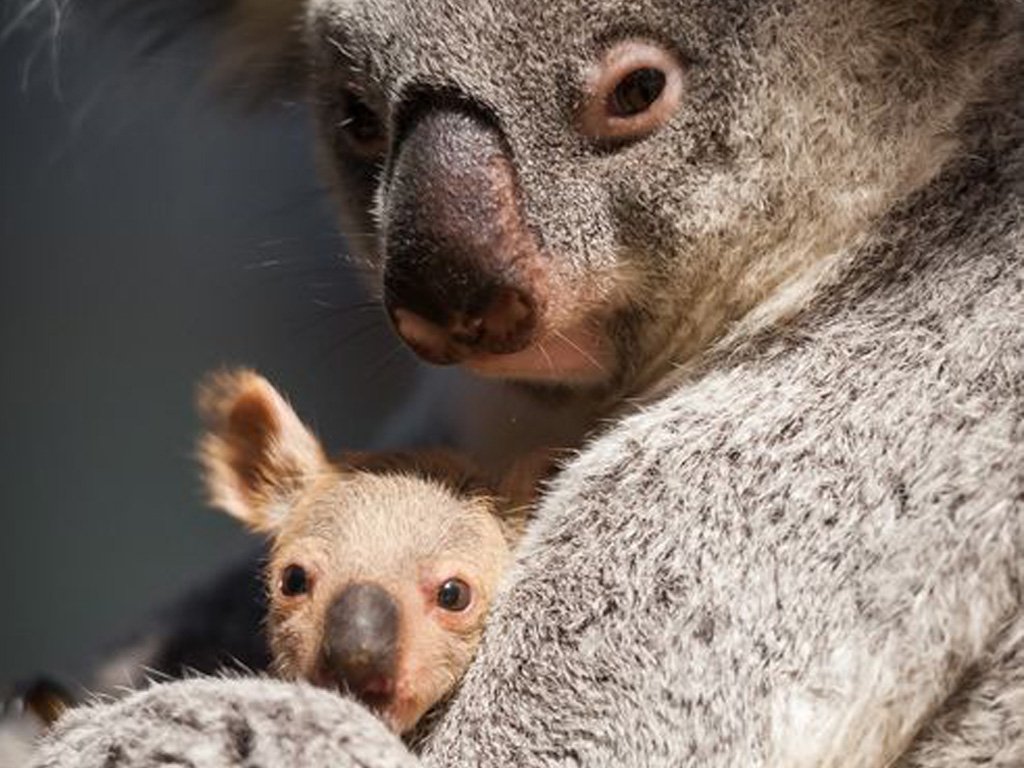
– The Joey stays in its mother’s pouch for about 6 or 7 months, drinking only milk. Before it can tolerate gumleaves, which are toxic for most mammals, the joey must feed on a substance called ‘pap’ which is a specialised form of the mother’s droppings that is soft and runny. This allows the mother to pass on to the joey special micro-organisms from her intestine which are necessary for it to be able to digest the gumleaves. It feeds on this for a period of up to a few weeks, just prior to it coming out of the pouch at about 6 or 7 months of age.
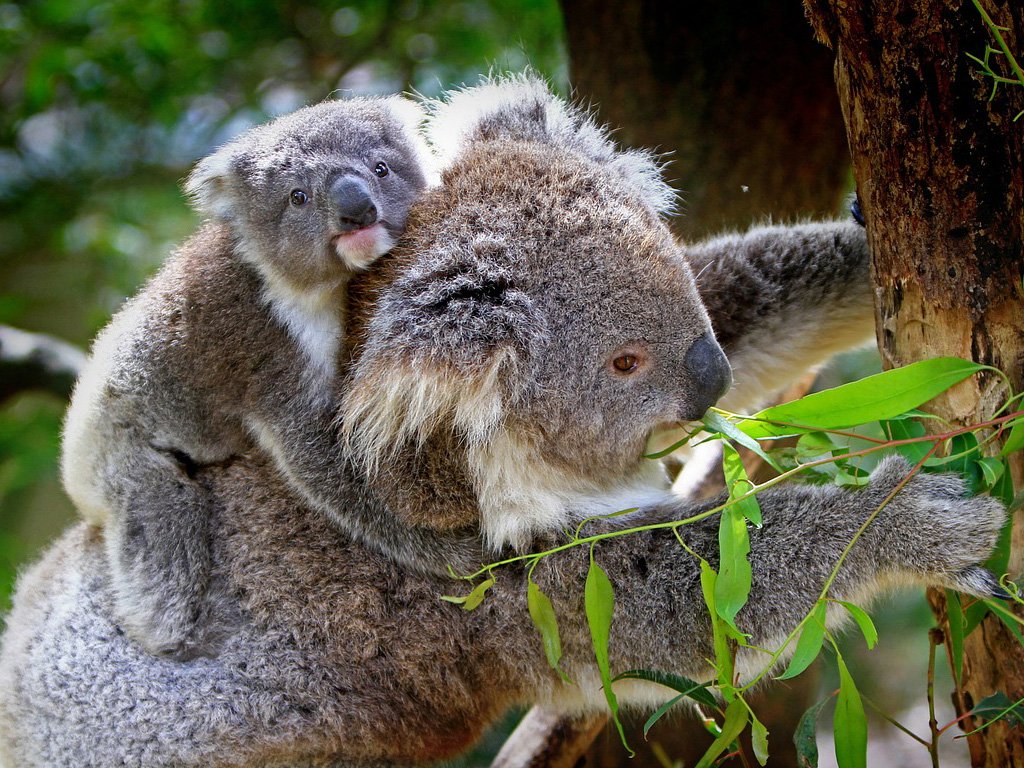
– After venturing out of the pouch, the Joey rides on its mother’s abdomen or back, although it continues to return to her pouch for milk until it is too big to fit inside. The joey leaves its mother’s home range between 1 and 3 years old, depending on when the mother has her next joey. You can adopt your own Joey here!
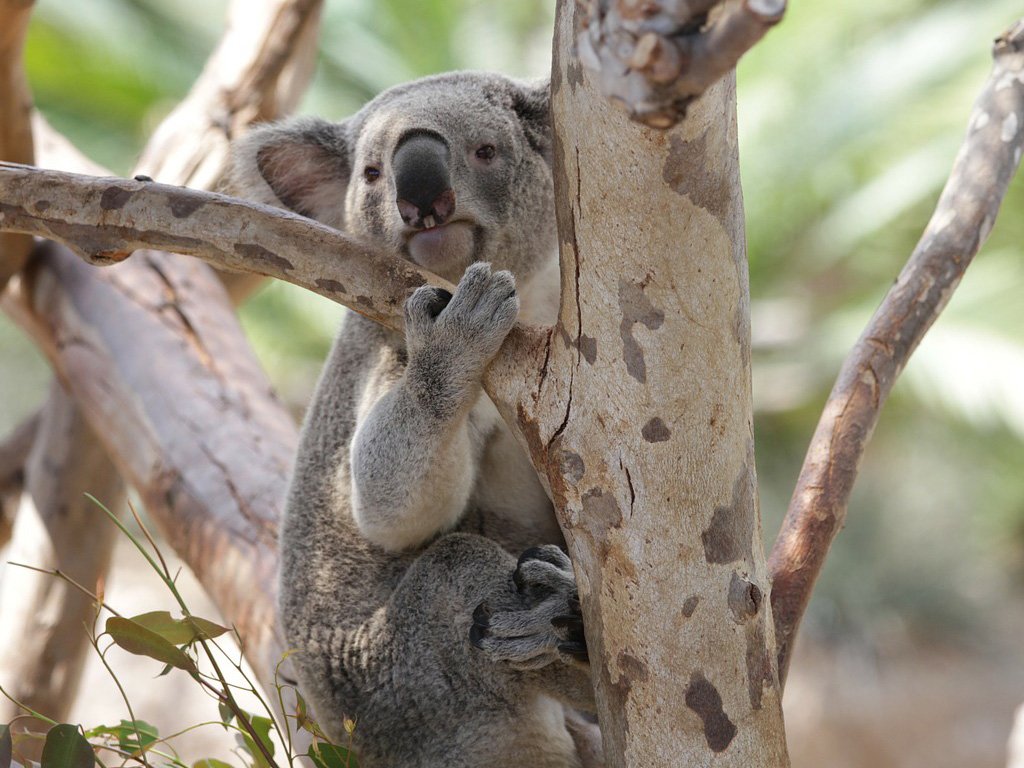
– Female Koalas are fully mature by about 2 years of age and males by their third or fourth year. By this time they need to have found their own home range, either in a home range left vacant by a dead Koala or in a new area of the forest. This is one reason why Koalas need quite large areas of habitat.

– Koalas do not live in rainforests or desert areas. They live in the tall eucalypt forests and low eucalypt woodlands of mainland eastern Australia, and on some islands off the southern and eastern coasts. Queensland, NSW, Victoria and South Australia are the only states where Koalas are found naturally in the wild.
– The Australian Koala Foundation believes that the Australian Government should be responsible for the protection of all Koala habitat on private land. The current fragmented approach of each State being responsible for its own Koalas is not working.

– There are well over 700 varieties of eucalypts. Koalas eat only some of these. They are very fussy eaters and have strong preferences for different types of gum leaves. Within a particular area, as few as one, and generally no more than two or three species of eucalypt will be regularly browsed (we call these ‘primary browse trees’) while a variety of other species, including some non-eucalypts, appear to be browsed occasionally or used for just sitting or sleeping in.
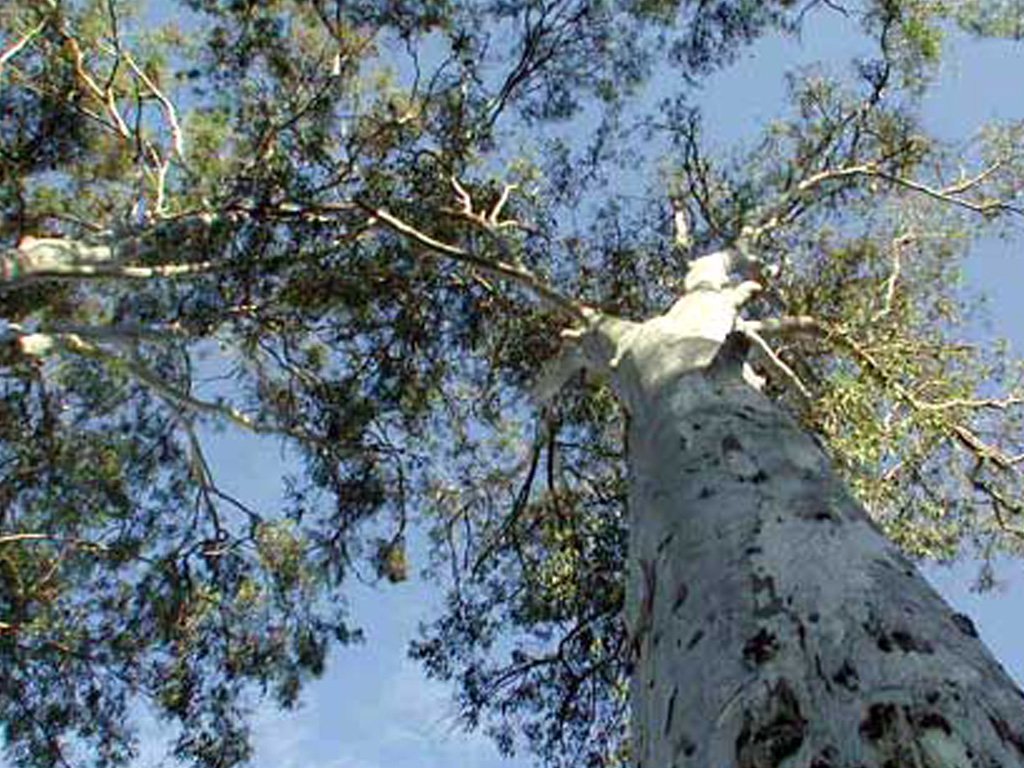
– Different species of eucalypts grow in different parts of Australia, so a Koala in Victoria would have a very different diet from one in Queensland. Click here to view the AKF’s National Koala Tree Planting List.
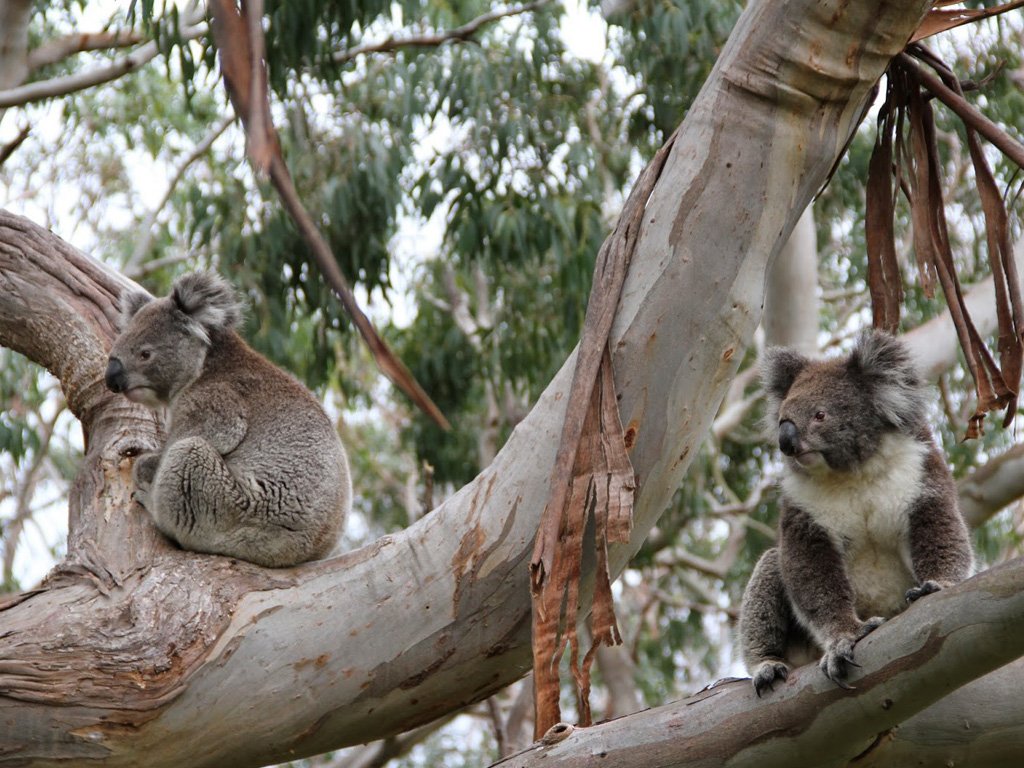
– A forest can only have a certain number of Koalas living in it. This is called the forest’s ‘carrying capacity’. Like pasture for sheep, the available gumtrees can only feed a certain number of Koalas.
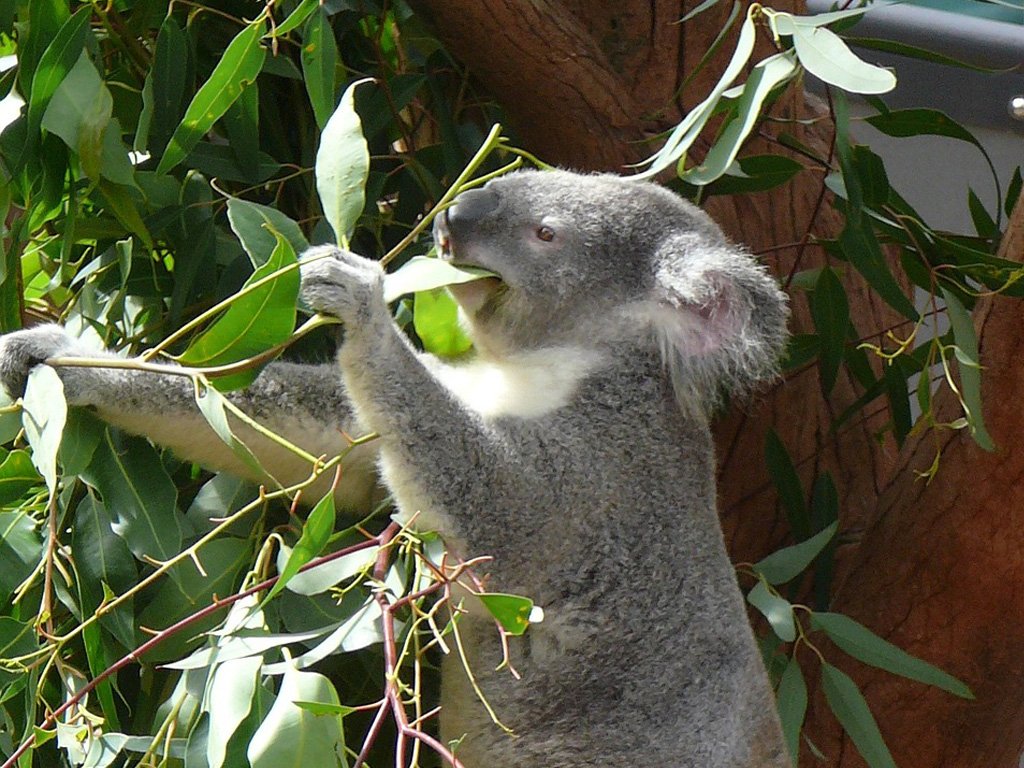
– An adult Koala eats about half a kilogram to one kilogram of leaves each night, depending on many factors, including the size and sex of the koala and where the Koala lives.
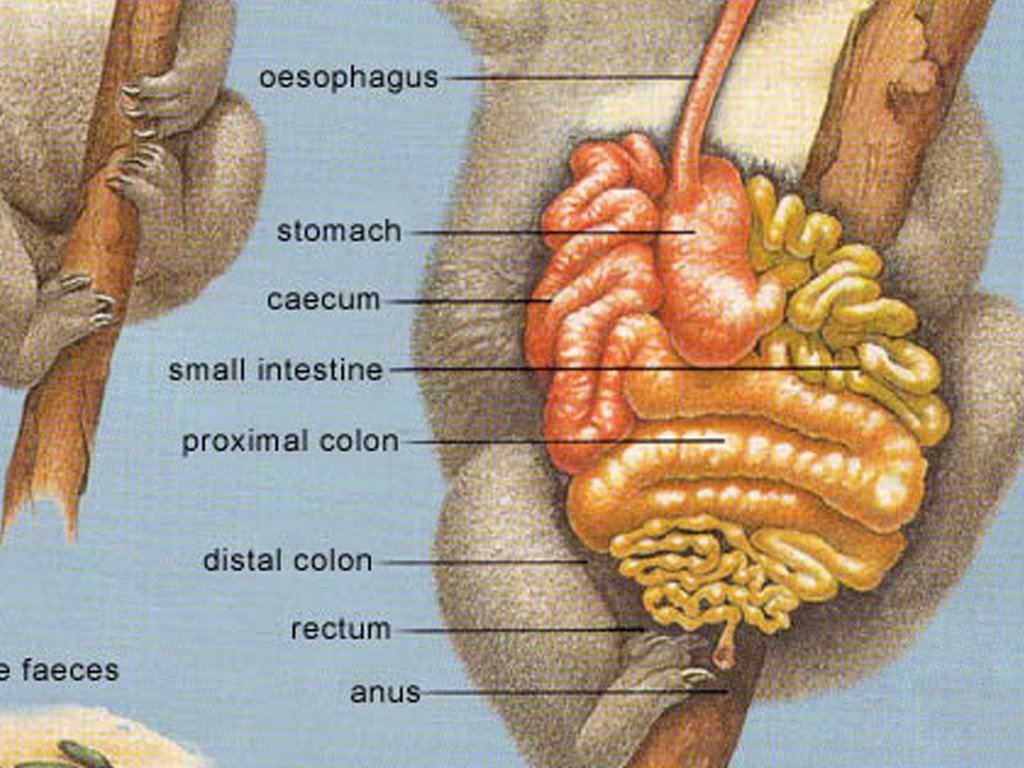
– Koalas have an unusual fibre-digesting organ called a caecum. Other mammals, including humans, also have a caecum, but the Koala’s is very long (200 cms) and it has a blind end. It contains millions of bacteria which break down the fibre into substances which are easier to absorb. Even so, the Koala is still only able to absorb 25% of fibre eaten, hence their need to eat large amounts of leaves.

– Koalas don’t normally need to drink as they get all the moisture they need from the gumleaves. However, they can drink if necessary, such as in times of drought when the leaves may not contain sufficient moisture.
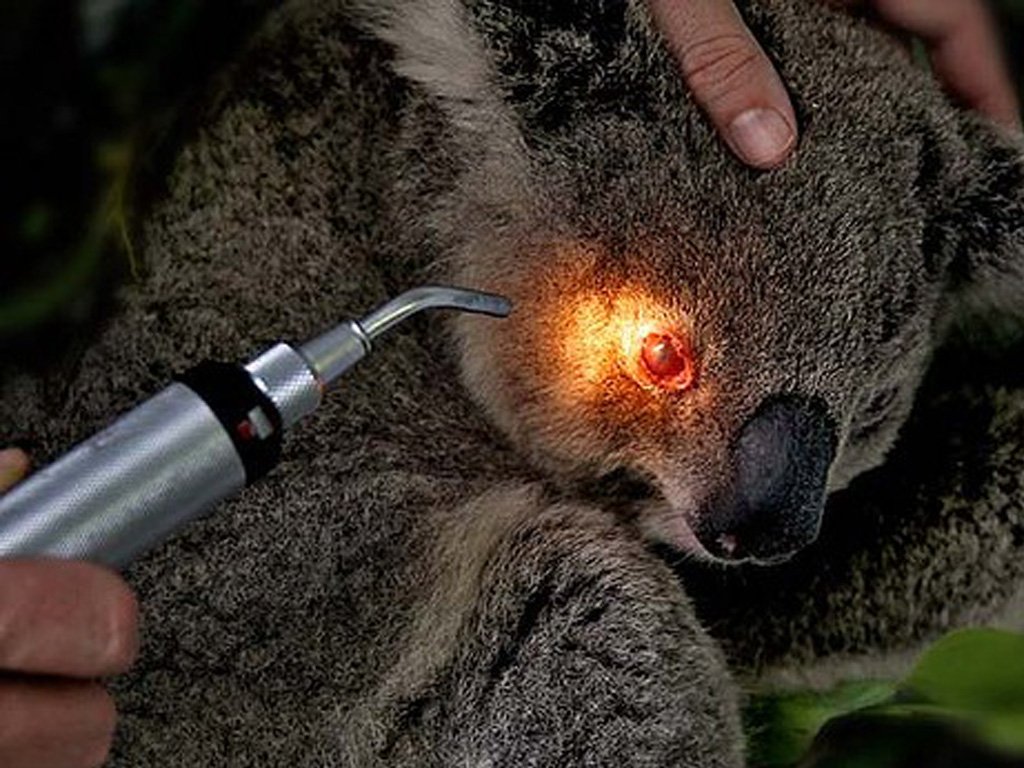
– Chlamydia is an organism which lives in the body tissues of most healthy Koalas. In normal populations, we believe that chlamydia may act as an inbuilt control mechanism to limit the population so that the trees are not overbrowsed, ensuring that only the strongest and fittest animals survive to breed.
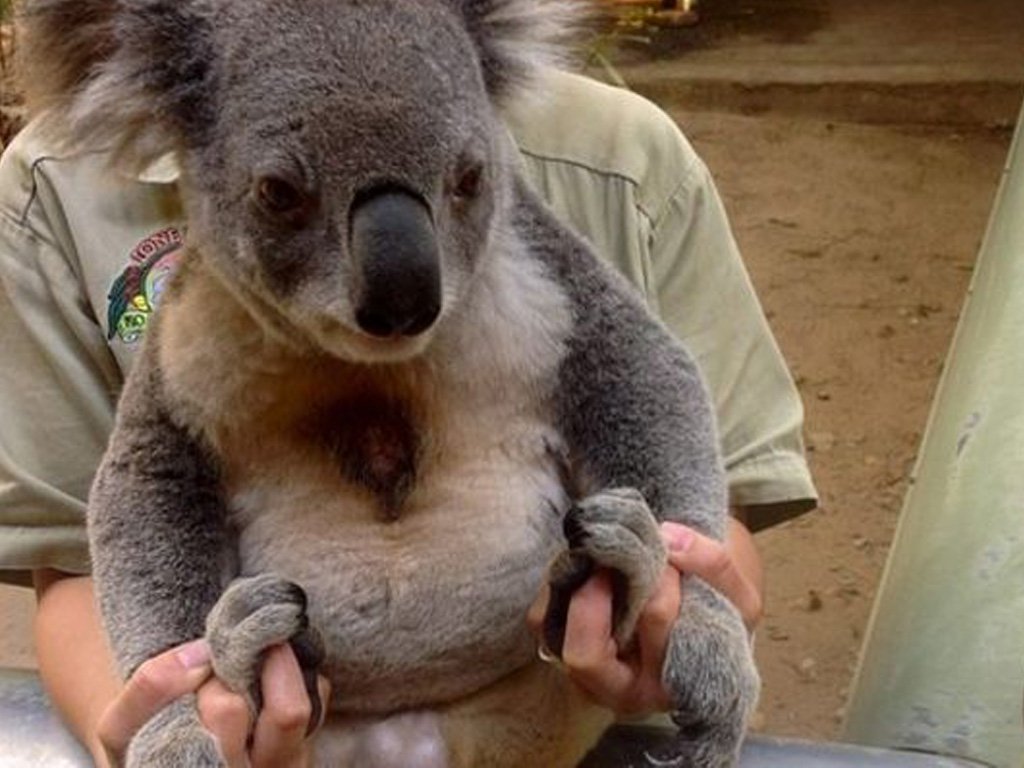
– Chlamydia can also sometimes make the Koalas sick but usually only when they get stressed, such as when their habitat is destroyed and, as a result, they have to cope with the dangers of cars, dogs and lack of food. This is why we need a Koala Protection Act.
Donate today to help us achieve this for Koalas.
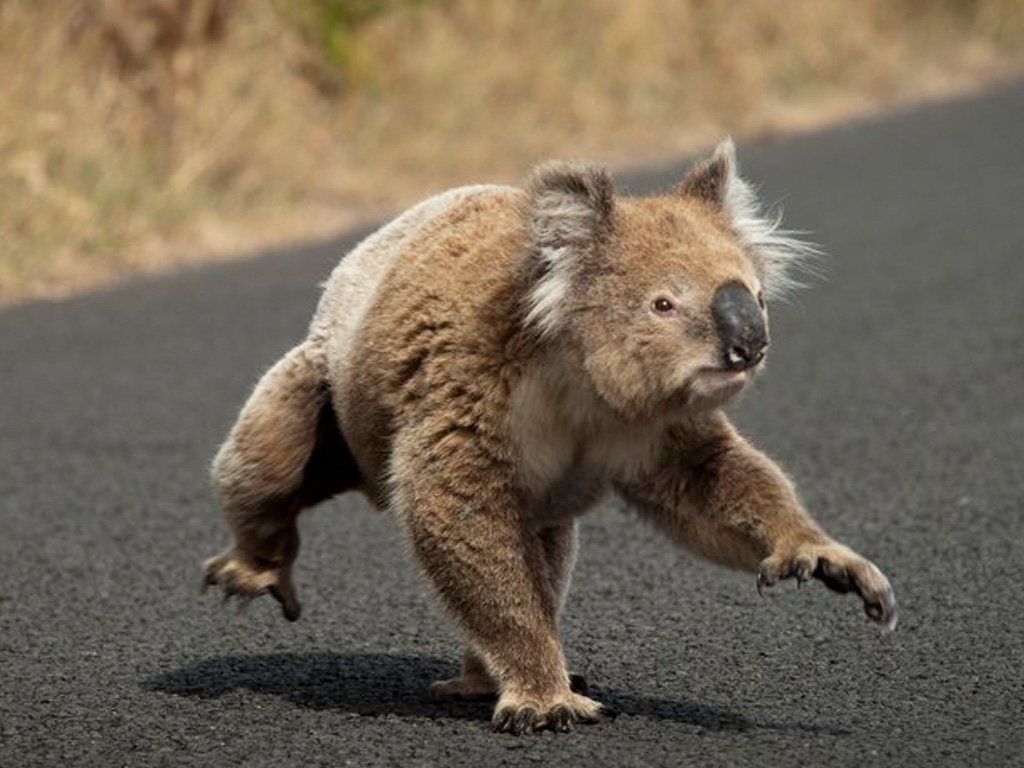
– The Australian Koala Foundation estimates that as a result of the loss of their habitat, around 4,000 Koalas are killed each year by dogs and cars alone.
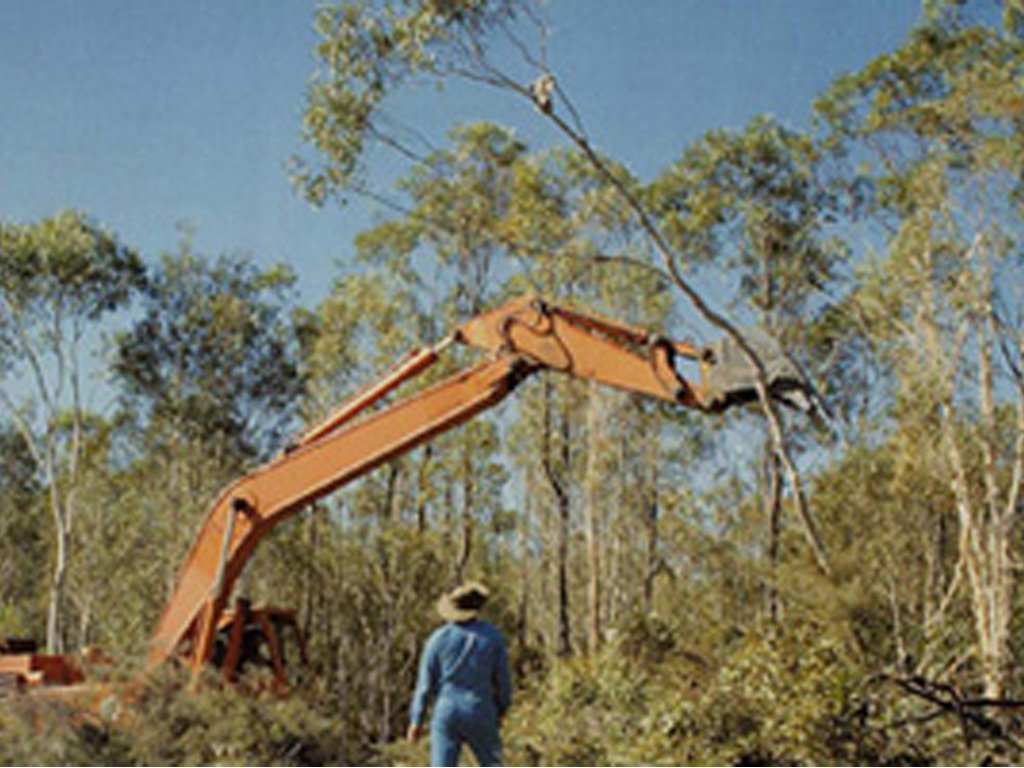
– Australia has one of the highest land clearing rates in the world. 80% of Koala habitat has already disappeared.
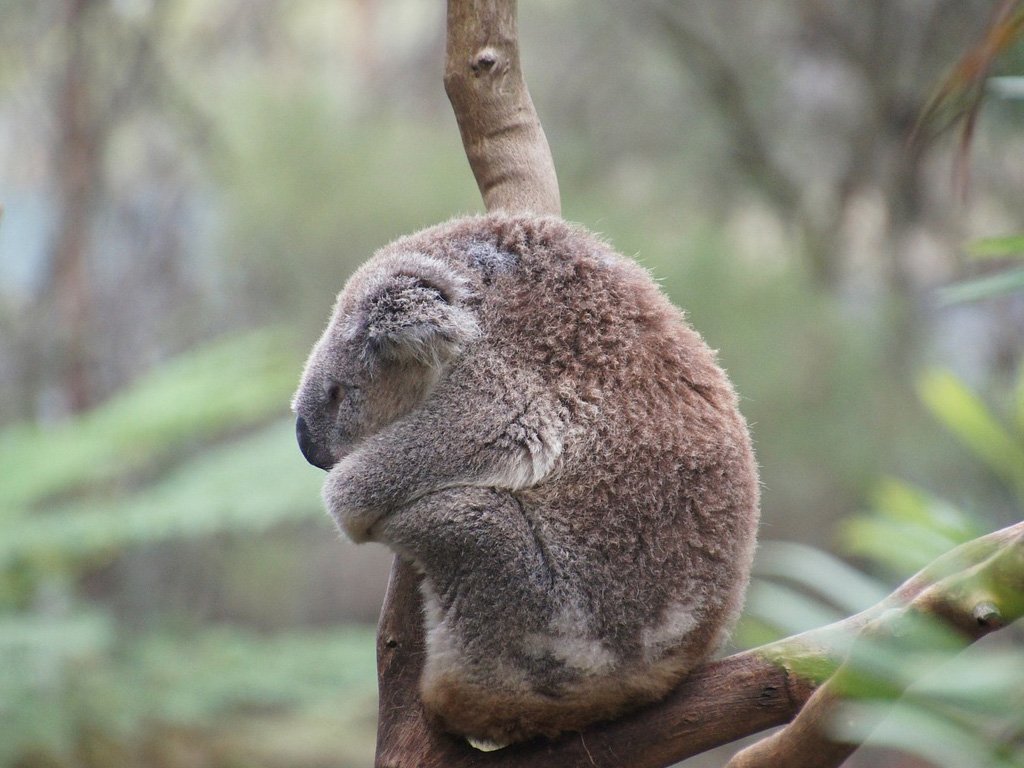
– Although Koalas themselves are protected by law, around eighty percent of any remaining habitat occurs on privately owned land and almost none of that is protected by legislation. This is why we need a Koala Protection Act.

– The AKF was successful in getting the Koala listed as ‘Vulnerable’ in 2012. Unfortunately this changed nothing, and Koala populations are still rapidly declining. Click here to send an email or letter to the Federal Minister for the Environment in support of a Koala Protection Act.


